 Service Hotline400-666-0112
Service Hotline400-666-0112 Service Hotline400-666-0112
Service Hotline400-666-0112

Industrial production can generate certain levels of pollution, especially in the refining, petrochemical, and metal processing industries where emulsified oil, cutting fluid, electroplating fluid, alkaline washing, acid washing, phosphating, etc. are used for production, resulting in a large amount of waste liquid. These waste liquids contain pollutants with a concentration far higher than that of wastewater, making it difficult to use conventional sewage treatment processes to degrade pollutants
The boiling point of a liquid varies with external pressure, meaning that boiling occurs when the saturated vapor pressure of the liquid reaches external pressure. Reducing system pressure can lower the boiling point of liquids, allowing them to boil at lower temperatures, which is the principle of negative pressure distillation.
The vacuum pump vacuums to above -90kPa, and the boiling point of the liquid (water) is around 45 ° C. At this temperature, water begins to evaporate into water vapor and is eliminated. Solid substances with boiling points higher than water and insoluble in water remain in the cavity.
Use a vacuum pump to vacuum the distillation kettle to above -90Kpa, and the boiling point of water drops to around 45 ℃. When the waste liquid enters the distillation kettle, the water evaporates and condenses at this temperature before being discharged. Solid substances with boiling points higher than water and insoluble in water remain in the distillation kettle and are discharged as residues.
Overview of the current situation
Industrial production can generate certain levels of pollution, especially in the refining, petrochemical, and metal processing industries where emulsified oil, cutting fluid, electroplating fluid, alkaline washing, acid washing, phosphating, etc. are used for production, resulting in a large amount of waste liquid. These waste liquids contain much higher concentrations of pollutants than wastewater, making it difficult to degrade pollutants using conventional sewage treatment processes.
Calidaddelaire Introducing Japan's negative pressure distillation emission reduction technology
Directly helping enterprises reduce outsourcing processing costs

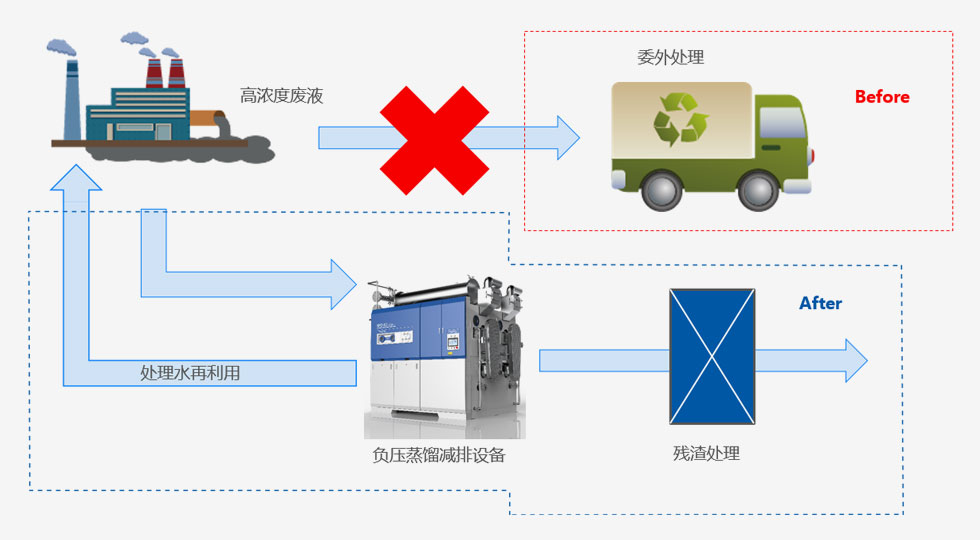
Technical Principles
The boiling point of a liquid varies with external pressure, meaning that boiling occurs when the saturated vapor pressure of the liquid reaches external pressure. Reducing system pressure can lower the boiling point of liquids, allowing them to boil at lower temperatures, which is the principle of negative pressure distillation.
The vacuum pump vacuums to above -90kPa, and the boiling point of the liquid (water) is around 45 ° C. At this temperature, water begins to evaporate into water vapor and is eliminated. Solid substances with boiling points higher than water and insoluble in water remain in the cavity.
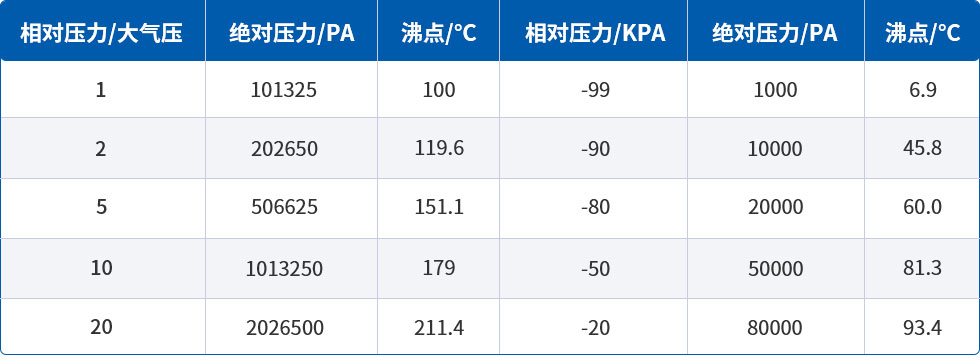
Attachment: (Water) Pressure and Boiling Point Comparison Table
Technological process
Use a vacuum pump to vacuum the distillation kettle to above -90Kpa, and the boiling point of water drops to around 45 ℃. When the waste liquid enters the distillation kettle, the water evaporates and condenses at this temperature before being discharged. Solid substances with boiling points higher than water and insoluble in water remain in the distillation kettle and are discharged as residues.
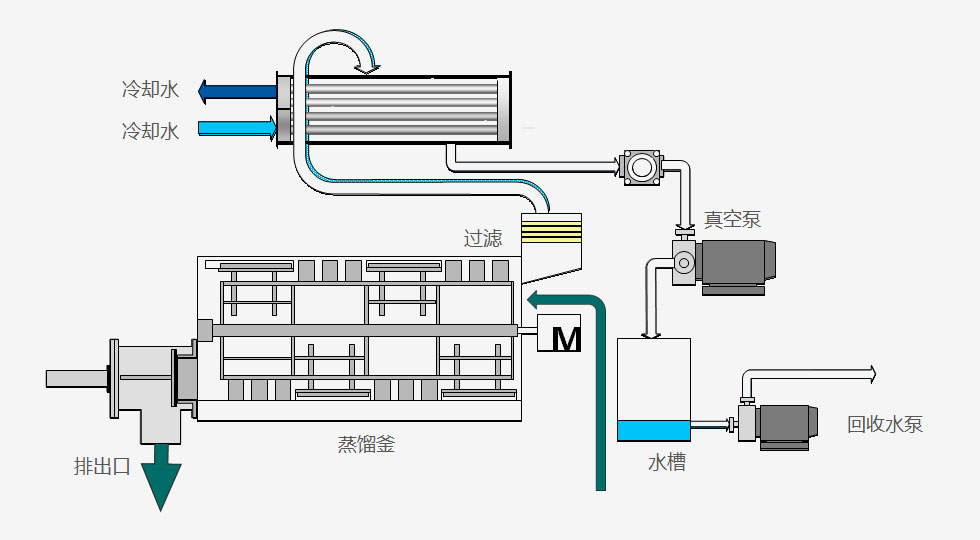
System composition
Use a vacuum pump to vacuum the distillation kettle to above -90Kpa, and the boiling point of water drops to around 45 ℃. When the waste liquid enters the distillation kettle, the water evaporates and condenses at this temperature before being discharged. Solid substances with boiling points higher than water and insoluble in water remain in the distillation kettle and are discharged as residues.
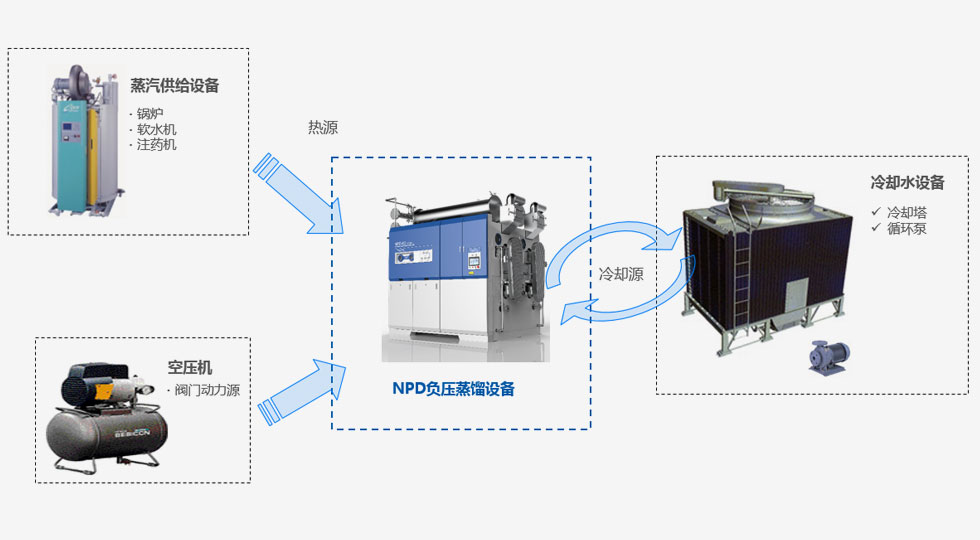
System advantages
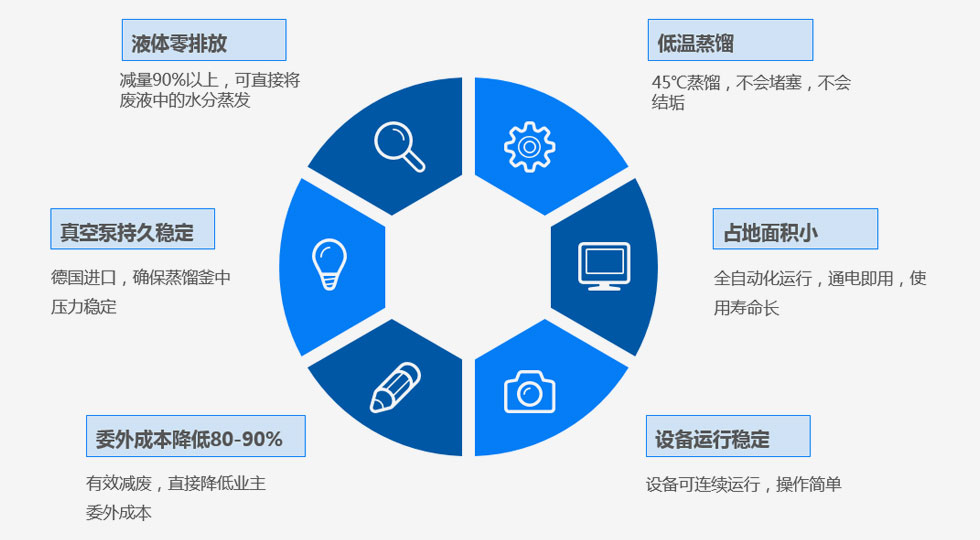
System composition
» type of machine:1250
» maximum throughput:20T/Day
» concentration ratio:90%
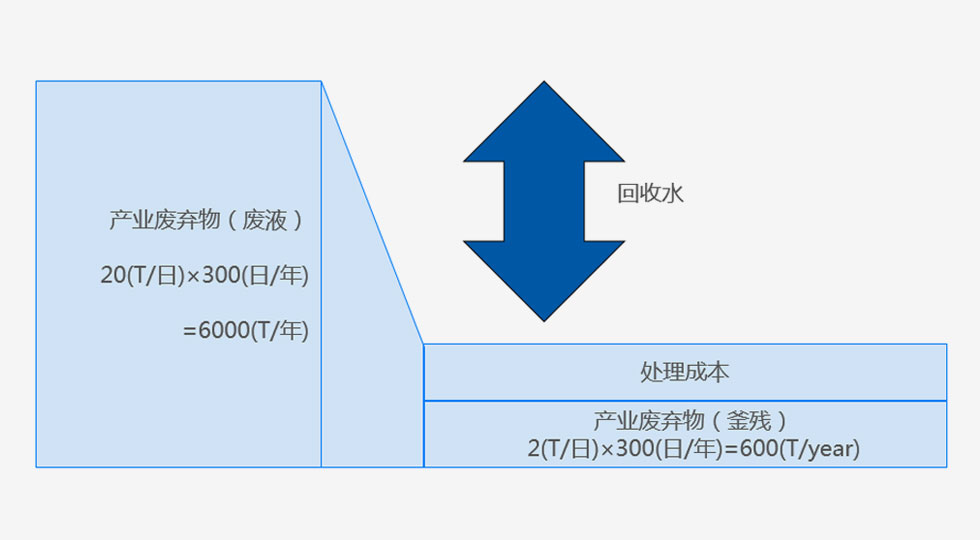
Test data
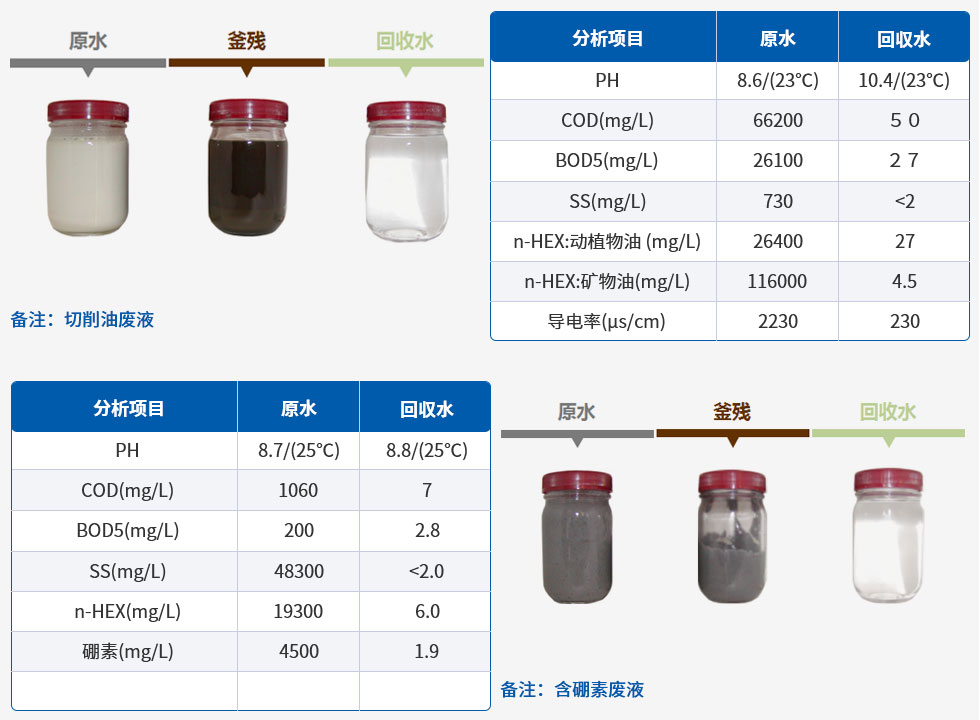
Benefits Assessment

Note: Unit price details after negative pressure distillation technology: electricity fee of 20 yuan, steam fee of 200 yuan, equipment maintenance and operation management fee of 60 yuan,
Residue outsourcing5000rmb×10%=500rmb(Concentrated residue10%)
Taking chemical concentrated hazardous waste as an example, the monthly treatment capacity is 300m3
Scope of application
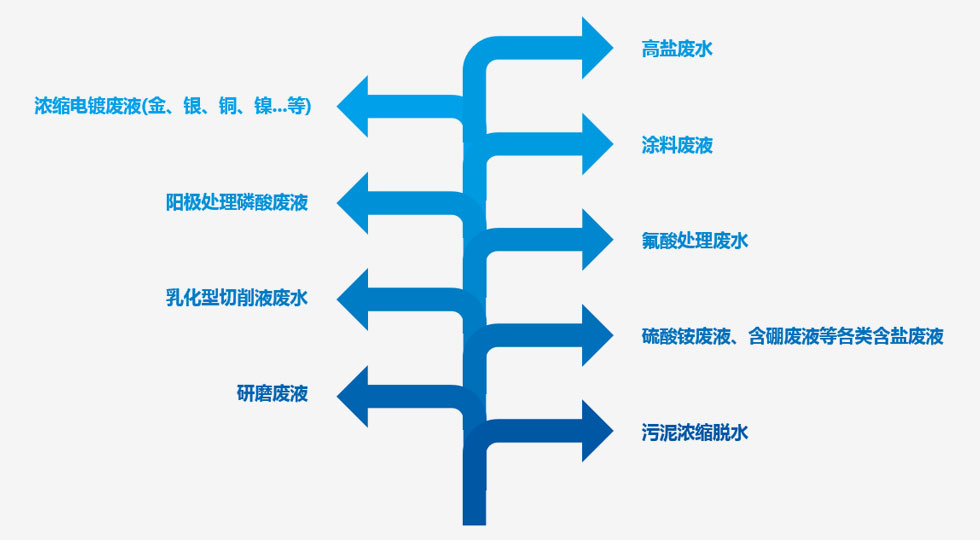

 Email Address:admin@cadair.com.cn
Email Address:admin@cadair.com.cn Address:14th floor, Greenland Central Plaza Phase II, Xinhua North Road, Tongzhou District, Beijing
Address:14th floor, Greenland Central Plaza Phase II, Xinhua North Road, Tongzhou District, Beijing Shanghai
Shanghai Tianjin
Tianjin Wuxi
Wuxi Guangzhou
Guangzhou